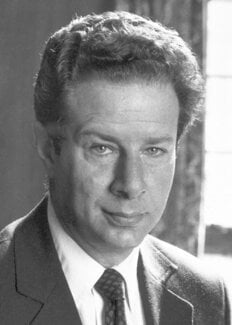Sidney Altman
Biographical

I was born in Montreal in 1939, the second son of poor immigrants. My mother worked in a textile mill and my father in a grocery store before they met and married. It was from them that I learned that hard work in stable surroundings could yield rewards, even if only in infinitesimally small increments.
For our immediate family and relatives, Canada was a land of opportunity. However, it was made clear to the first generation of Canadian-born children that the path to opportunity was through education. No sacrifice was too great to forward our education and, fortunately, books and the tradition of study were not unknown in our family.
I am conscious of two events that sparked my early interest in science, the first being the appearance of the A-bomb. The mystique associated with the bomb, the role that scientists played in it, and its general importance could not fail to impress even a six-year old. About seven years later I was given a book about the periodic table of the elements. For the first time I saw the elegance of scientific theory and its predictive power. I should mention that while I was growing up, Einstein was presented as a worthy role model for a young boy who was good at his studies. I added various writers of fiction and stars of ice hockey and baseball to my pantheon.
By the time I reached high school my father’s grocery store had made our life adequately comfortable and I was able to choose, without any practical encumbrances, the subjects that I wanted to pursue in college. My intention was to enroll at McGill University but an unexpected series of events led me to study physics at the Massachusetts Institute of Technology. There I experienced four years of over-stimulation among brilliant, arrogant and zany peers and outstanding teachers. Lee Grodzins supervised my senior thesis in nuclear physics and provided me with a wonderful research experience and with his friendship. During my final semester at MIT, I took a short introductory course in molecular biology to find out what all the excitement was about. That course, taught by Cyrus Levinthal, familiarized me with nucleic acids and molecular genetics and prepared me for future encounters with these topics.
I spent eighteen months as a graduate student in physics at Columbia University, waiting unhappily for an opportunity to work in a laboratory and wondering if I should continue in physics. Eight months later, having left Columbia, I was studying physics in a summer program and working in Colorado when I decided to enroll as a graduate student in biophysics. George Gamow, the physicist, had steered me to Leonard Lerman, then working on the intercalation of acridines into DNA at the University of Colorado Medical Center. In the excellent department chaired by Theodore T. Puck, Lerman provided the guidance, friendship and critical analysis that enabled me to enjoy molecular biology in a productive manner. After working on the effects of acridines on the replication of bacteriophage T4 DNA, I joined Mathew Meselson’s laboratory at Harvard University to study a DNA endonuclease involved in the replication and recombination of T4 DNA. Two years later I was privileged to become a member of the group led by Sydney Brenner and Francis Crick at the Medical Research Council Laboratory of Molecular Biology in Cambridge, England. As an ex-physicist, I felt as if I was joining the equivalent of Bohr’s group in Copenhagen in the 1920’s. It turned out to be scientific heaven.
At the MRC laboratory I started the work that led to the discovery of RNase P and the enzymatic properties of the RNA subunit of that enzyme. John D. Smith, as well as several post-doctoral colleagues, provided me with much good advice that enabled me to test my ideas. The discovery of the first radiochemically pure precursor to a tRNA molecule enabled me to get a job as an assistant professor at Yale University in 1971, a difficult time to get any job at all.
My career at Yale followed a standard academic pattern with promotion through the ranks until I became Professor in 1980. I was Chairman of my department from 1983 – 1985 and in 1985 became the Dean of Yale College for four years, an experience that not only provided me with the opportunity to make many new friends, mostly outside the sciences, but also revealed to me the full panorama of human and academic problems that exist in a university community. On July 1, 1989 I returned to the post of Professor on a fulltime basis.
I have been blessed with outstanding mentors, people who became personal friends and who have illuminated so many aspects of human creativity for me with their intellectual power, expertise as scientists and qualities as human beings. In particular, they are Leonard Lerman, Mathew Meselson, Sydney Brenner and Lee Grodzins. There are, of course, many others whose names I cannot list here. My life has been enormously enriched by my marriage to Ann Korner in 1972. My wife is my colleague, mentor and friend in every respect. She and our two wonderful children, Daniel, born in 1974 and Leah, born in 1977, have contributed immeasurably to whatever success I have achieved.
This autobiography/biography was written at the time of the award and later published in the book series Les Prix Nobel/ Nobel Lectures/The Nobel Prizes. The information is sometimes updated with an addendum submitted by the Laureate.
Nobel Prizes and laureates
Six prizes were awarded for achievements that have conferred the greatest benefit to humankind. The 12 laureates' work and discoveries range from proteins' structures and machine learning to fighting for a world free of nuclear weapons.
See them all presented here.
